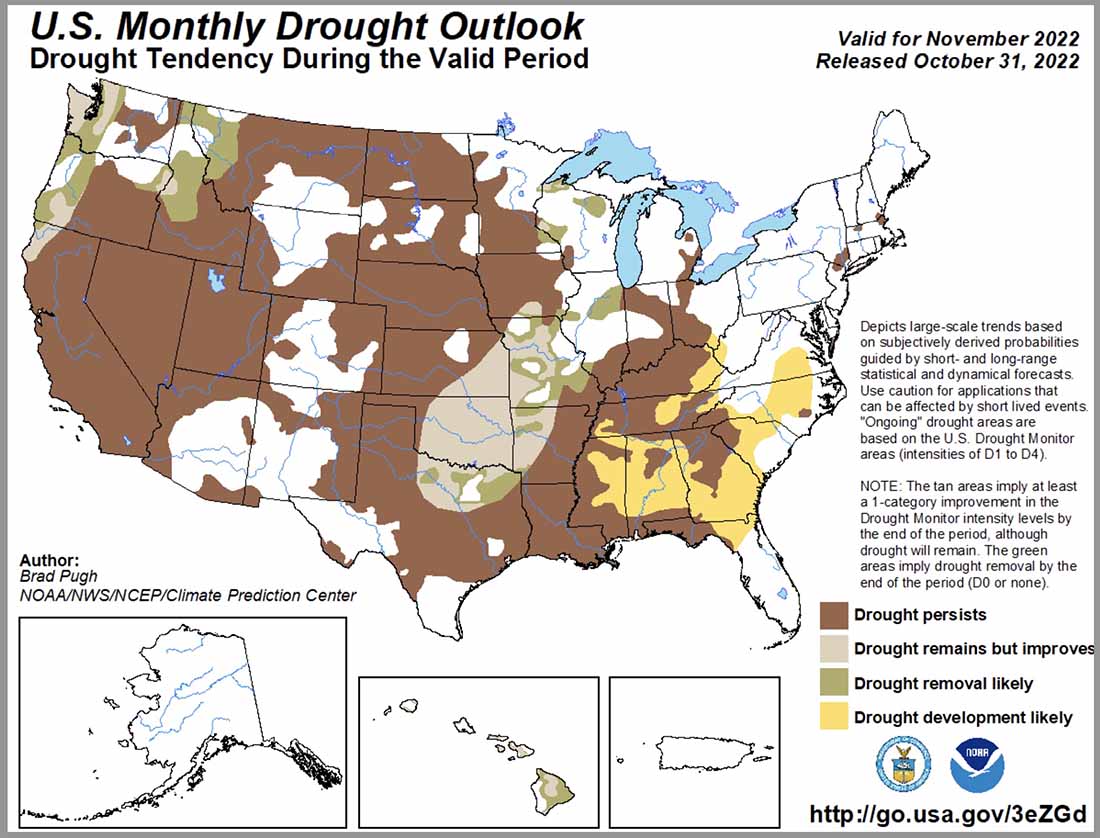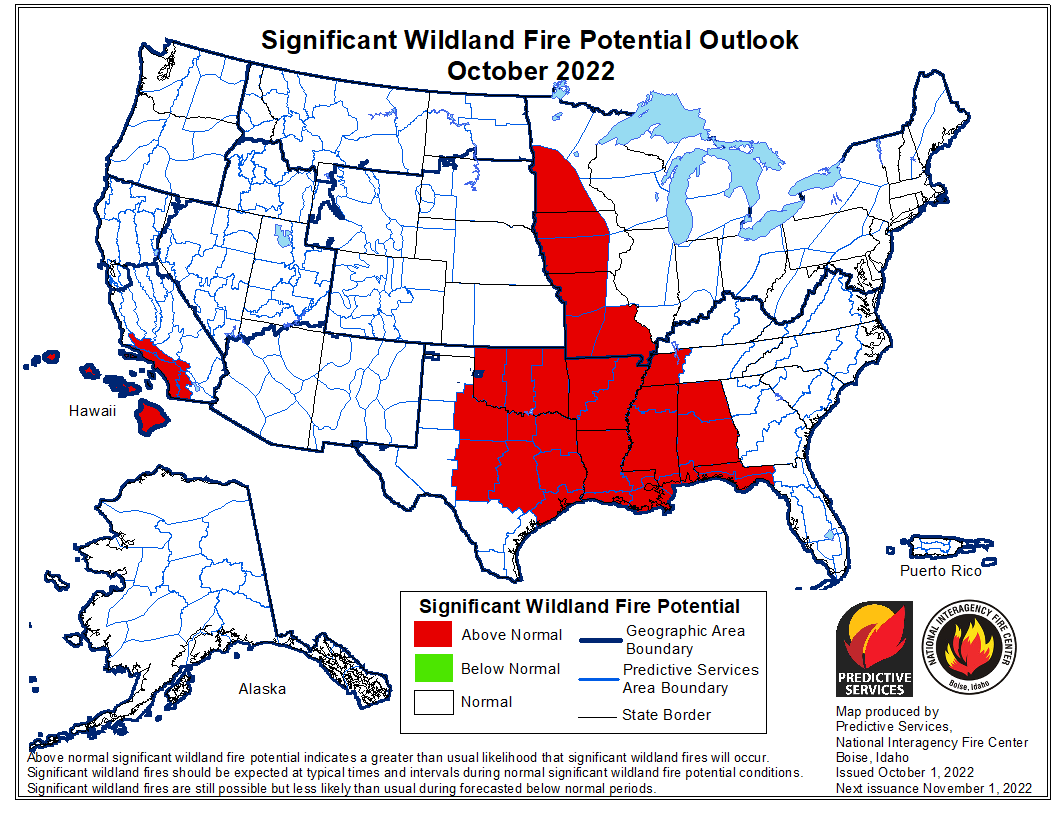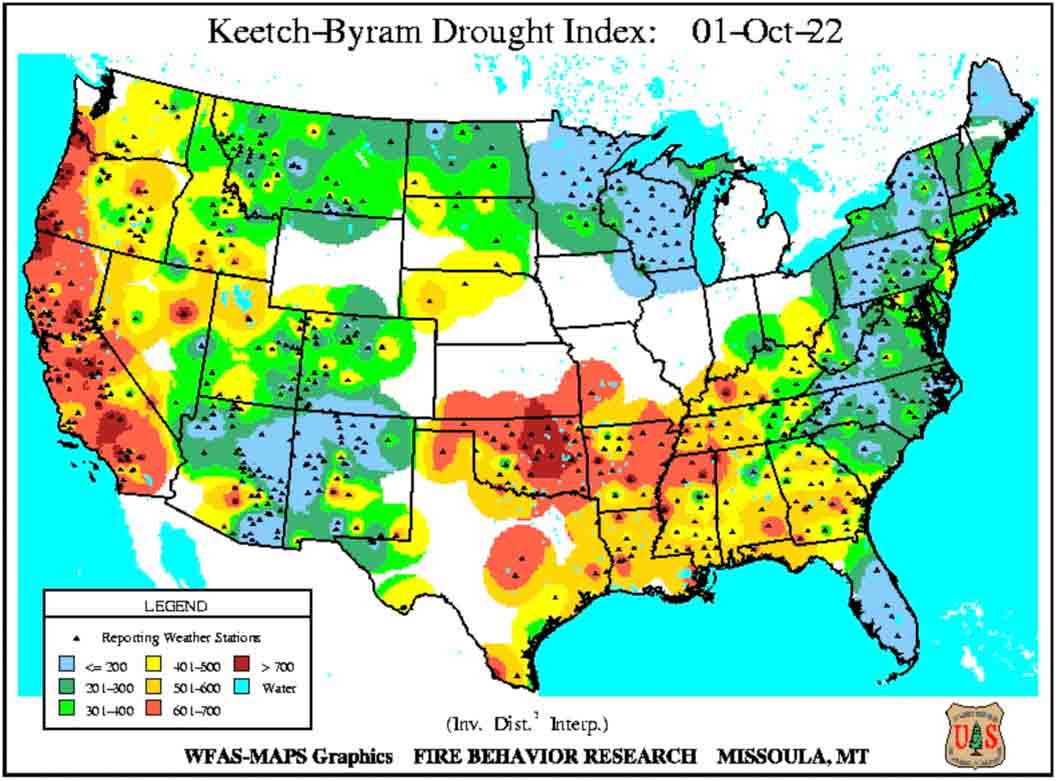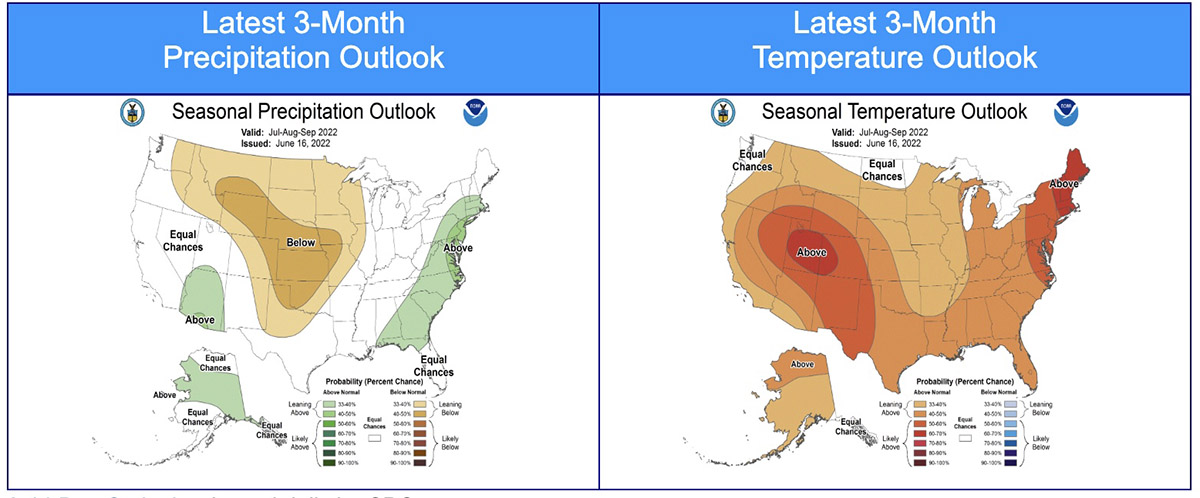
The wildland fire potential released today by the National Interagency Fire Center predicts no above average wildfire potential for the 11 western states for the next four months through February, 2023. However the Gulf and Southeast coasts will remain high during the entire period. It will also be high in the Southeast and the Mississippi Valley in November.
The fire potential text and maps from NIFC shown here represent the cumulative forecasts of the ten Geographic Area Predictive Services Units and the National Predictive Services Unit. Additional graphics are included from other sources.
Below:
- Excerpts from the NIFC narrative report for the next four months;
- Additional NIFC monthly graphical outlooks;
- NOAA’s temperature and precipitation forecasts;
- Drought Monitor;
- Keetch-Byram Drought Index;
- Soil moisture.
“Drought now covers nearly two-thirds of the contiguous US. Drought continues in much of the West, with expanding and intensifying drought in portions of the Northwest due to warmer and drier than normal conditions in October, including record setting temperatures.
“Near to below normal temperatures and near to above normal precipitation are forecast from the Northwest through the northern Plains into the Great Lakes. Below normal precipitation is likely from southern California and the Southwest through the southern Plains to the Gulf and Southeast Coasts through winter. Above normal temperatures through the winter are likely across California, the southern Rockies into Texas, and along the Gulf and East Coasts.
“Above normal significant potential is forecast for the Hawai’ian Islands for November before returning to normal potential through winter. The Texas Panhandle, western Oklahoma, and western Mid-Mississippi Valley to the southern Appalachians and northern Gulf Coast are forecast to have above normal potential in November before mostly returning to normal for winter as well.
“In December, above normal significant fire potential will remain across the Lower Mississippi Valley and northern Gulf Coast, with above normal potential remaining near the northern Gulf Coast in January. Above normal significant fire potential is then forecast to expand into southeast New Mexico, south and west Texas, southwest Florida, and the Southeast coastal plain in February.”


































